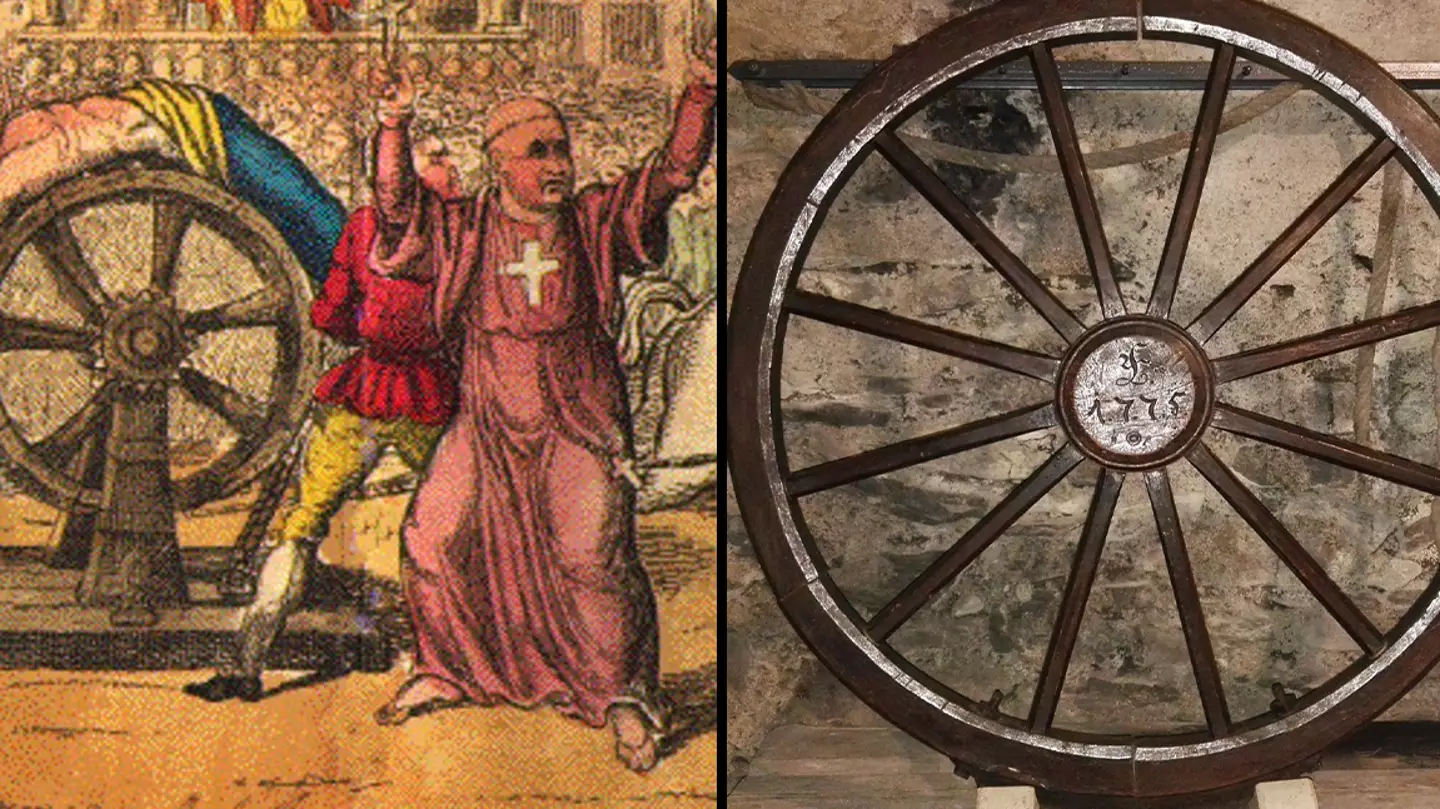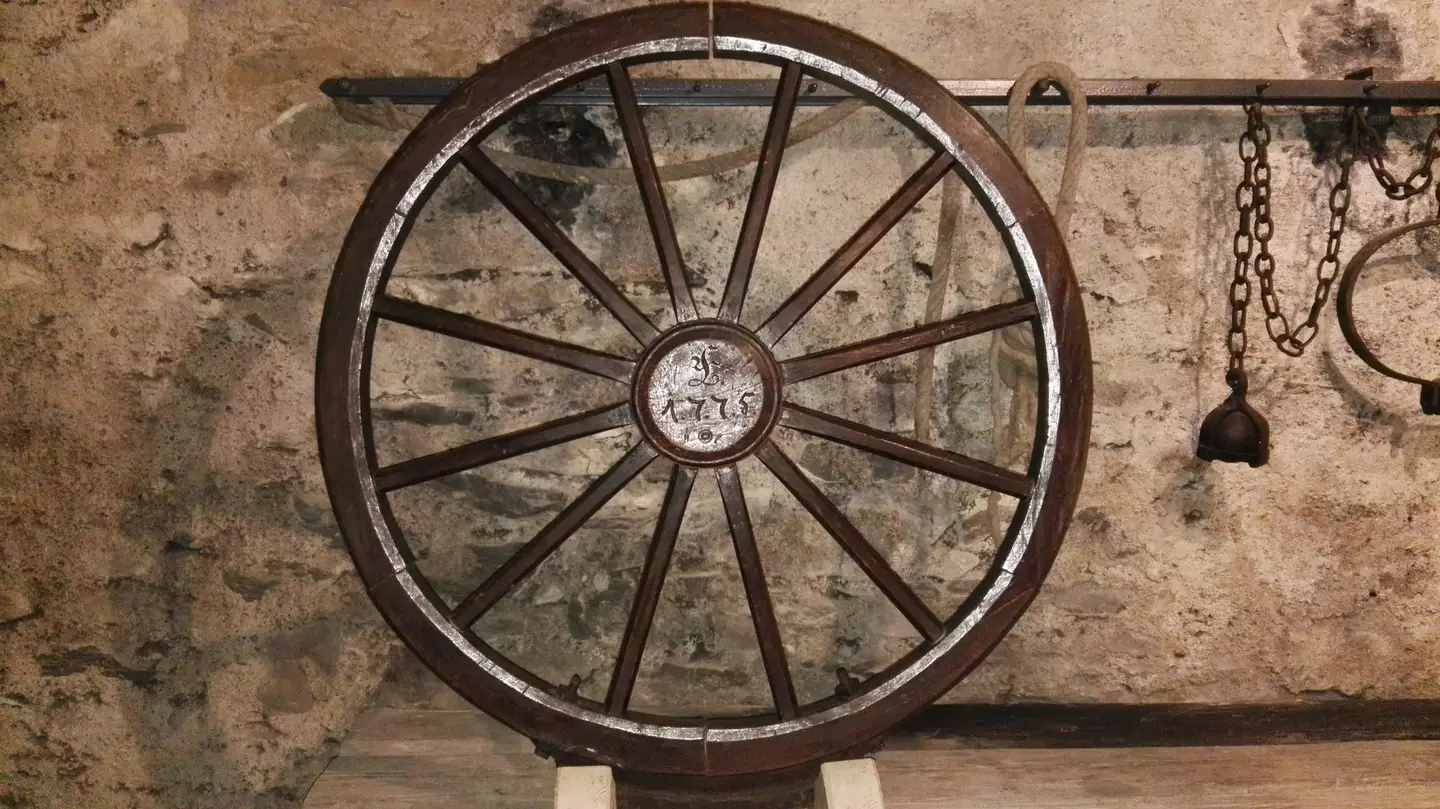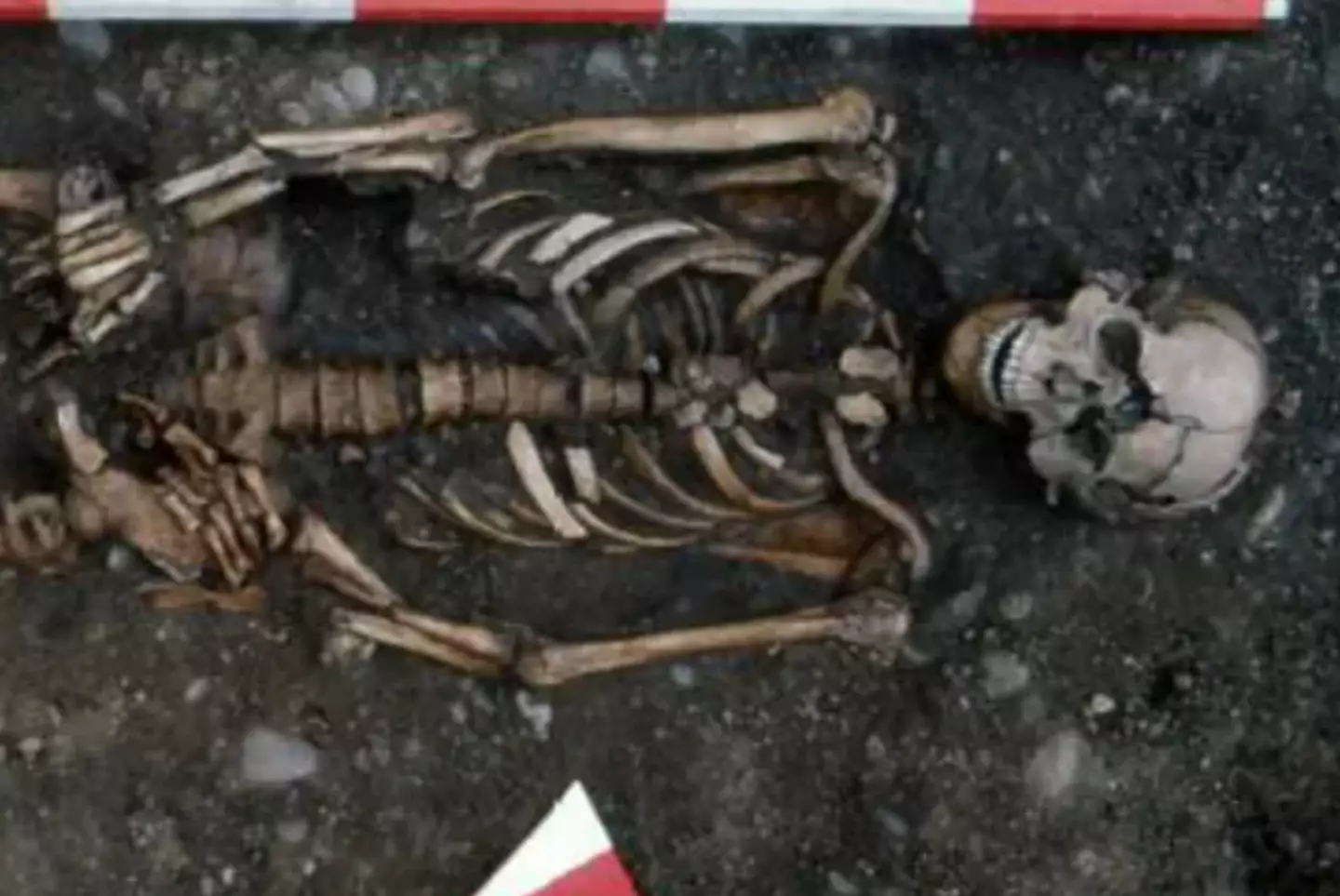
The worst way to die is a morbid topic of conversation that, weirdly, crops up pretty regularly at the pub. Drowning never seems to be a particularly tempting choice, nor does being buried alive.
But have you ever considered the breaking wheel – also known as the Wheel of Catherine or execution wheel – which is one of the worst torture methods ever used? Something tells me this one might be added to the list...
It dates back to Europe from antiquity to the Middle Ages, and was used as a form of punishment for those found guilty of serious crimes like murder or rape.
Advert
Those convicted would be taken to a public stage with a scaffold and tied to the floor.
The executioners would then present the wheel - usually the same as used on wooden carriages but with an iron rim - which would often be modified with an extending blade for maximum damage. Eek.
The wheel would then be dropped on the person over and over again, from the shins upwards, with the intention to cause as much damage and mutilation to them as possible, without yet causing actual death. Double eek.

Once the person had passed away at the hands of the executioner, their body would be braided into another wooden spoked wheel, which would then be erected, much like a cross in a crucifixion.
Advert
And in a final act of brutality, a fire would be lit beneath the wheel.
Thankfully, this horrific method eventually began to disappear, with the last known use of the wheel taking place in France in 1788, although it did continue in other parts of Europe and South America until the 19th century.
A few years back, archaeologists discovered the skeleton of a Medieval man who appears to have died in this very way – well, that’s if you throw in a botched beheading in there as well.
The team discussed their findings in the Journal of Archaeological Science in 2019, explaining how they believed the man died between the ages of 17 and 20, at some point during the 13th Century.

He was buried near a cathedral in Milan, northern Italy, with signs that he suffered wounds symmetrically located across his arms and legs – suggesting some sort of intention.
Advert
The archaeologists said they felt he had been tortured using the breaking wheel, and that while it was usually reserved for those who had committed serious crimes, in northern Italy, the torture was more often reserved for people suspected to be plague spreaders.
They wrote: “The victim of the wheel could have been considered as different by his contemporaries, and possibly this discrimination may have been the cause of his final conviction, as he could have been sacrificed, being a ‘freak’, by an angry crowd, as a plague spreader."
Forensic analysis of the skeleton also revealed unusual linear fractures at the cranial base of the man’s skull, with the researchers hypothesising that it was the result of a sharp force trauma from a heavy weapon - as part of a ‘clumsy decapitation’.
Featured Image Credit: Wikimedia Commons/Public Domain/Z ThomasTopics: World News